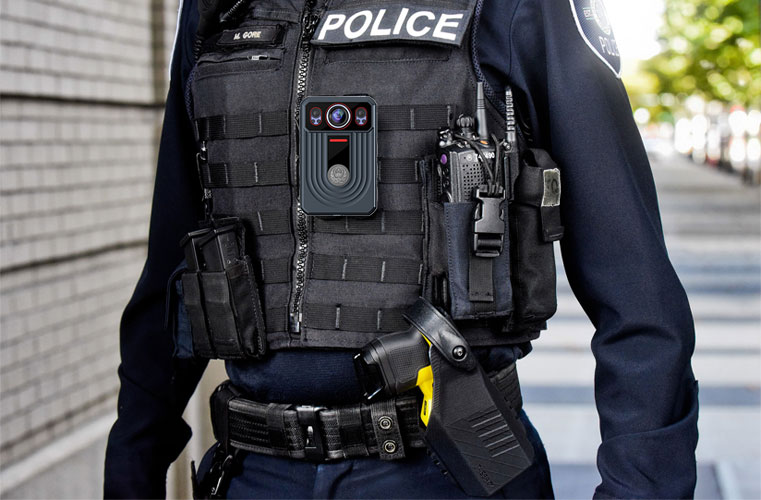Body-worn cameras have revolutionized policing in recent years. With the advent of wearable technology, law enforcement agencies around the world have started to adopt body-worn cameras as a tool to improve transparency and accountability in police interactions with the public. Body-worn cameras are small, lightweight devices that can be easily attached to an officer's uniform. They record audio and video footage from the officer's perspective, providing a first-person view of police interactions with the public. This footage can be used as evidence in court, to investigate complaints against police officers, or to provide a clear record of police operations.
The use of body-worn cameras has become a hotly debated topic, with advocates arguing that they can improve police accountability and reduce instances of police misconduct. Supporters of body-worn cameras believe that the devices can help prevent police brutality, racial profiling, and other forms of discrimination by providing a clear record of police interactions with the public. According to proponents, the utilization of body-worn cameras can foster stronger relationships between police and the communities they serve while also enhancing public trust in law enforcement agencies.

However, opponents of body-worn cameras have raised concerns about privacy, cost, and the potential for abuse. Some argue that body-worn cameras can invade people's privacy by capturing footage of their interactions with police officers without their consent. Others argue that the cost of implementing body-worn camera programs can be prohibitively expensive for some law enforcement agencies. Finally, some opponents are concerned that the footage captured by body-worn cameras could be used to unfairly prosecute civilians or to target specific groups of people.
Despite these concerns, the use of body-worn cameras has continued to grow in popularity. In many countries, including the United States, the United Kingdom, and Australia, law enforcement agencies have adopted body-worn camera programs as a tool to improve transparency and accountability in policing. As technology continues to evolve, it is likely that body-worn cameras will become even more widespread and sophisticated, providing even more benefits for law enforcement agencies and the communities they serve. In this blog post, we'll explore why body-worn police cameras are so important.
Accountability
One of the main reasons why body-worn police cameras are important is that they can improve police accountability. When officers wear cameras, they are more likely to behave professionally and follow proper procedures, knowing that their actions are being recorded. This can help prevent instances of police misconduct, such as excessive use of force, racial profiling, and other forms of discrimination. Body-worn cameras can also provide a clear record of police interactions with the public, which can be used to investigate complaints and hold officers accountable for their actions. This can help build trust between law enforcement agencies and the communities they serve.
Transparency
One of the key benefits of body-worn cameras is that they can improve transparency in police operations. When officers wear cameras, the public can see exactly what happened during police interactions, rather than relying on secondhand accounts or biased interpretations. This can help prevent misunderstandings and false accusations, and can provide a more accurate record of police operations.
In the past, police interactions with the public have often been shrouded in secrecy. Without video evidence, it can be difficult to determine exactly what happened during police encounters, and there may be conflicting accounts of events from different witnesses. This can lead to misunderstandings, mistrust, and even violence between police and the public.
By providing an impartial and unequivocal record of police interactions with the public, body-worn cameras can help to alleviate these concerns. When officers wear cameras, the footage they capture can be used to provide a more accurate account of events, reducing the risk of misunderstandings and false accusations. This can help to improve public trust in law enforcement agencies and can enhance the overall transparency of police operations.

Evidence Collection
Body-worn cameras are a valuable tool for evidence collection in law enforcement. When officers respond to a crime scene or investigate a crime, they can use the camera to record video and audio evidence that can be used in court. This can help improve the quality of evidence and can make it easier to prosecute criminals.
Body-worn cameras are capable of capturing a diverse range of evidence, such as witness statements, crime scenes, and interactions with suspects. The footage obtained from these cameras can be used to corroborate or challenge witness statements, furnish a precise account of events, and pinpoint suspects. Such evidence can be especially beneficial in situations where there are no eyewitnesses or when the accounts of witnesses are inconsistent or dubious.
Training and Professional Development
Body-worn cameras can also be used for training and professional development purposes. By reviewing footage of their interactions with the public, officers can identify areas where they need to improve and can receive feedback from their supervisors. This can help improve the overall professionalism of the police force and can enhance public trust in law enforcement agencies.
Protection for Officers
Finally, body-worn cameras can provide protection for police officers. When officers wear cameras, they can record any threats or attacks they may face during the course of their duties. This footage can be used to identify suspects and can provide evidence for criminal investigations. In addition, knowing that they are being recorded can help deter individuals from committing acts of violence against police officers.
Conclusion
In conclusion, body-worn police cameras are an important tool for law enforcement agencies around the world. They can improve police accountability, increase transparency in police operations, provide a more accurate record of police interactions with the public, and provide evidence for criminal investigations. They can also be used for training and professional development purposes and can provide protection for police officers. As such, the use of body-worn cameras should be encouraged and supported by law enforcement agencies and policymakers alike.


 French
French German
German Arabic
Arabic Italian
Italian Spanish
Spanish Japanese
Japanese Persian
Persian Korean
Korean Chinese (Simplified)
Chinese (Simplified)









